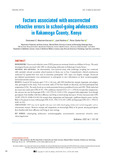| dc.contributor.author | Raballah, Evans | |
| dc.contributor.author | Wilding, Kristen | |
| dc.contributor.author | Anyona, Samuel B. | |
| dc.contributor.author | Munde, Elly O. | |
| dc.contributor.author | Hurwitz, Ivy | |
| dc.contributor.author | Onyango, Clinton O. | |
| dc.contributor.author | Ayieko, Cyrus | |
| dc.contributor.author | Lambert, Christophe G. | |
| dc.contributor.author | Schneider, Kristan A. | |
| dc.contributor.author | Seidenberg, Philip D. | |
| dc.contributor.author | Ouma, Collins | |
| dc.contributor.author | McMahon, Benjamin H. | |
| dc.contributor.author | Cheng, Qiuying | |
| dc.contributor.author | Perkins, Douglas J. | |
| dc.date.accessioned | 2022-09-19T12:01:22Z | |
| dc.date.available | 2022-09-19T12:01:22Z | |
| dc.date.issued | 2022-08-14 | |
| dc.identifier.uri | https://doi.org/10.3389/fgene.2022.977810 | |
| dc.identifier.uri | https://www.frontiersin.org/articles/10.3389/fgene.2022.977810/full?&utm_source=Email_to_authors_&utm_medium=Email&utm_content=T1_11.5e1_author&utm_campaign=Email_publication&field=&journalName=Frontiers_in_Genetics&id=977810 | |
| dc.identifier.uri | http://ir-library.mmust.ac.ke:8080/xmlui/handle/123456789/2092 | |
| dc.description.abstract | Background: Severe malarial anemia (SMA; Hb < 5.0 g/dl) is a leading cause of childhood morbidity and mortality in holoendemic Plasmodium falciparum transmission regions such as western Kenya.
Methods: We investigated the relationship between two novel complement component 5 (C5) missense mutations [rs17216529:C>T, p(Val145Ile) and rs17610:C>T, p(Ser1310Asn)] and longitudinal outcomes of malaria in a cohort of Kenyan children (under 60 mos, n = 1,546). Molecular modeling was used to investigate the impact of the amino acid transitions on the C5 protein structure.
Results: Prediction of the wild-type and mutant C5 protein structures did not reveal major changes to the overall structure. However, based on the position of the variants, subtle differences could impact on the stability of C5b. The influence of the C5 genotypes/haplotypes on the number of malaria and SMA episodes over 36 months was determined by Poisson regression modeling. Genotypic analyses revealed that inheritance of the homozygous mutant (TT) for rs17216529:C>T enhanced the risk for both malaria (incidence rate ratio, IRR = 1.144, 95%CI: 1.059–1.236, p = 0.001) and SMA (IRR = 1.627, 95%CI: 1.201–2.204, p = 0.002). In the haplotypic model, carriers of TC had increased risk of malaria (IRR = 1.068, 95%CI: 1.017–1.122, p = 0.009), while carriers of both wild-type alleles (CC) were protected against SMA (IRR = 0.679, 95%CI: 0.542–0.850, p = 0.001).
Conclusion: Collectively, these findings show that the selected C5 missense mutations influence the longitudinal risk of malaria and SMA in immune-naïve children exposed to holoendemic P. falciparum transmission through a mechanism that remains to be defined. | en_US |
| dc.language.iso | en | en_US |
| dc.publisher | Frontier in genetics | en_US |
| dc.subject | Nonsynonymous, amino acid, changes , α-chain, complement component, 5 influence longitudinal, susceptibility, Plasmodium, falciparum, infections, severe, malarial, anemia | en_US |
| dc.title | Nonsynonymous amino acid changes in the α-chain of complement component 5 influence longitudinal susceptibility to Plasmodium falciparum infections and severe malarial anemia in kenyan children | en_US |
| dc.type | Article | en_US |

